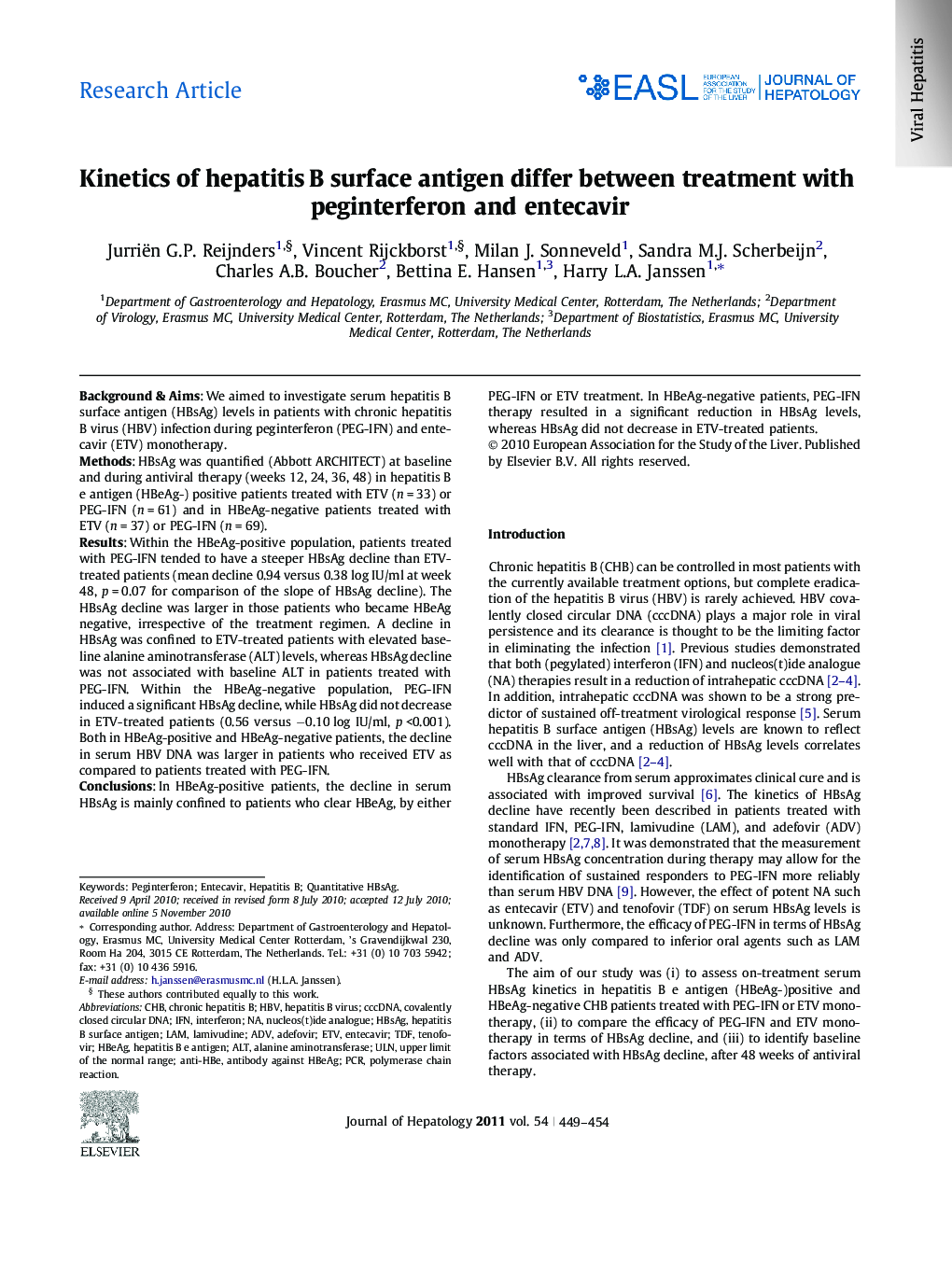| Article ID | Journal | Published Year | Pages | File Type |
|---|---|---|---|---|
| 6106880 | Journal of Hepatology | 2011 | 6 Pages |
Background & AimsWe aimed to investigate serum hepatitis B surface antigen (HBsAg) levels in patients with chronic hepatitis B virus (HBV) infection during peginterferon (PEG-IFN) and entecavir (ETV) monotherapy.MethodsHBsAg was quantified (Abbott ARCHITECT) at baseline and during antiviral therapy (weeks 12, 24, 36, 48) in hepatitis B e antigen (HBeAg-) positive patients treated with ETV (n = 33) or PEG-IFN (n = 61) and in HBeAg-negative patients treated with ETV (n = 37) or PEG-IFN (n = 69).ResultsWithin the HBeAg-positive population, patients treated with PEG-IFN tended to have a steeper HBsAg decline than ETV-treated patients (mean decline 0.94 versus 0.38 log IU/ml at week 48, p = 0.07 for comparison of the slope of HBsAg decline). The HBsAg decline was larger in those patients who became HBeAg negative, irrespective of the treatment regimen. A decline in HBsAg was confined to ETV-treated patients with elevated baseline alanine aminotransferase (ALT) levels, whereas HBsAg decline was not associated with baseline ALT in patients treated with PEG-IFN. Within the HBeAg-negative population, PEG-IFN induced a significant HBsAg decline, while HBsAg did not decrease in ETV-treated patients (0.56 versus â0.10 log IU/ml, p <0.001). Both in HBeAg-positive and HBeAg-negative patients, the decline in serum HBV DNA was larger in patients who received ETV as compared to patients treated with PEG-IFN.ConclusionsIn HBeAg-positive patients, the decline in serum HBsAg is mainly confined to patients who clear HBeAg, by either PEG-IFN or ETV treatment. In HBeAg-negative patients, PEG-IFN therapy resulted in a significant reduction in HBsAg levels, whereas HBsAg did not decrease in ETV-treated patients.
